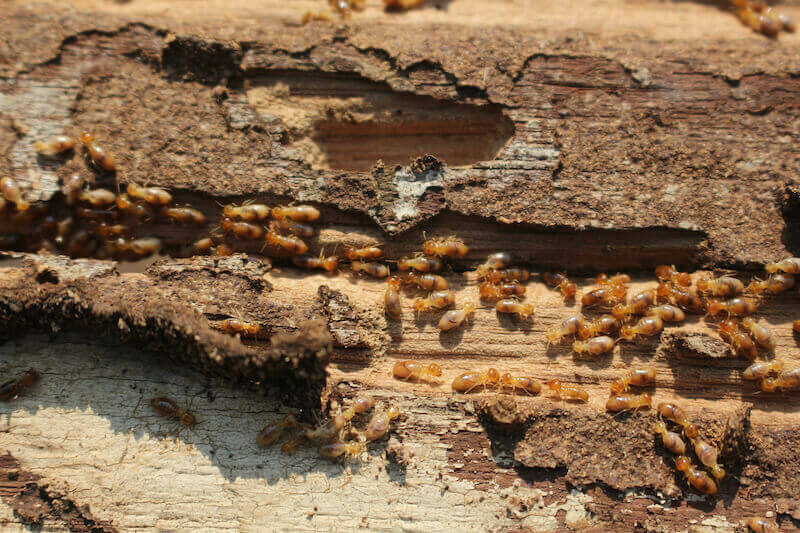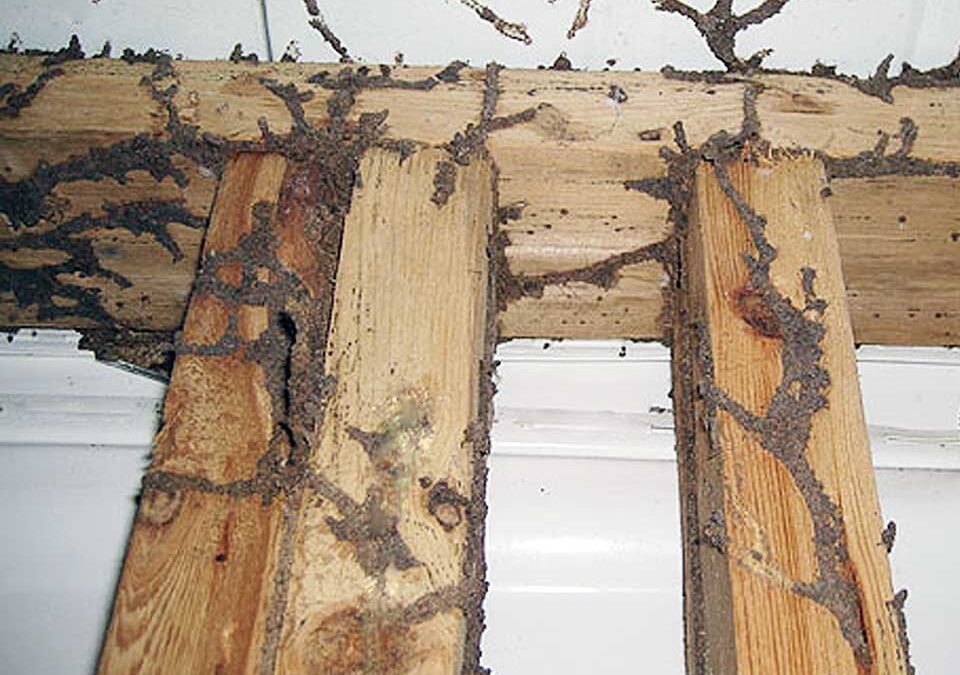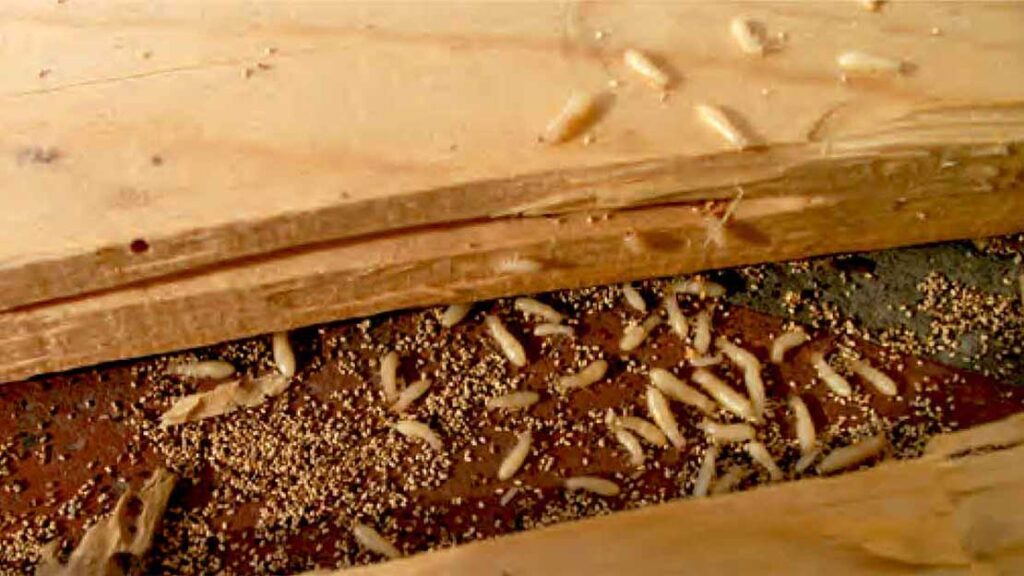Termite Removal Services by Pest Control Xperts in Santa Cruz
Serving homes, apartments, dormitories, hotels, and healthcare offices throughout Santa Cruz, Ben Lemond, Aptos, Soquel, Felton, Scotts Valley, Capitola, Mount Hermon, California, and Surrounding Areas
Professional Termite Control for Santa Cruz, Ben Lemond, Aptos, Soquel, Felton, Scotts Valley, Capitola, Mount Hermon, California
Are you battling a relentless Termite problem in your Santa Cruz home or business? You’ve tried everything, from store-bought sprays to traps, only to see those destructive pests return, seemingly stronger than ever. The truth is, those DIY efforts are merely temporary illusions, undone by the hidden, thriving colony deep within your property. At Santa Cruz, Pest Control Xperts, we understand your frustration. We’re here to tell you that true Termite elimination doesn’t come from surface treatments, but from a strategic, professional approach that targets the source, eradicating the queen and the entire nest. Don’t let Termite silently destroy your investment. Discover why property owners in Santa Cruz, Ben Lemond, Aptos, Soquel, Felton, Scotts Valley, Capitola, Mount Hermon trust us to deliver lasting peace of mind.
Why Termite Appear in Santa Cruz and Surrounding Communities
Santa Cruz, California, with its unique blend of coastal climate, lush landscapes, and diverse architecture, creates an ideal environment for Termite to thrive. Understanding these local factors is crucial to effective Termite control in Santa Cruz, Ben Lemond, Aptos, Soquel, Felton, Scotts Valley, Capitola, Mount Hermon.
Climate & Geography: A Haven for Wood-Destroying Insects
Mild, Wet Winters: Unlike regions with harsh, freezing winters that can suppress Termite activity, Santa Cruz experiences mild, wet winters. This consistent moisture, especially prevalent near the San Lorenzo River and the numerous redwood forests, provides the perfect conditions for subterranean Termite to establish and expand their colonies year-round. The damp soil and decaying wood offer both shelter and a constant food source.
Warm, Humid Summers: While not as intensely humid as some inland areas, Santa Cruz’s warm summers, often accompanied by coastal fog, maintain a level of moisture that prevents Termite from drying out. This sustained warmth and humidity accelerate their breeding cycles and foraging activities, leading to more rapid structural damage.
Coastal Proximity: The proximity to the Pacific Ocean means higher ambient humidity and, often, less vigilant moisture management in homes. Leaky pipes, poor drainage, and inadequate ventilation in crawl spaces, common issues in older coastal properties, become prime attractants for Termite seeking water sources.
Architecture & Urban Factors: Unseen Vulnerabilities
Historic Wooden Homes: Santa Cruz boasts a significant number of charming, older homes, many constructed with extensive wooden framing, foundations, and siding. These older structures, often with less modern Termite-resistant building practices, present abundant food sources and easy access points for Termite. Cracks in foundations, deteriorating wood, and direct wood-to-soil contact are common vulnerabilities.
Dense Commercial Districts: Even commercial buildings in downtown Santa Cruz and Capitola are not immune. Older commercial properties, especially those with basements or subterranean levels, can harbor hidden Termite activity. Shared walls and utility lines can also facilitate the spread of infestations between adjacent businesses.
New Suburban Developments: While newer homes in areas like Ben Lemond, Aptos, Soquel, Felton, Scotts Valley, Capitola, Mount Hermon often incorporate some Termite prevention measures, construction debris left in the soil, landscaping timbers, and irrigation systems that create consistent moisture around foundations can still invite Termite. The disruption of natural habitats during development can also push Termite toward human structures.
Neighboring Infestations: Termite colonies can spread. If your neighbors in Santa Cruz or the surrounding towns have an active Termite problem, your property is at a higher risk of infestation, as colonies expand through the soil or swarmers seek new nesting sites.
Types of Termite Commonly Found in California
Understanding the specific Termite species prevalent in California, particularly in the Santa Cruz region, is vital for effective identification and targeted treatment. Each species exhibits unique behaviors and poses distinct threats to your property.
Subterranean Termite
Identification: These are the most destructive Termite species in North America and are widespread in California. Workers are pale, cream-colored, and about 1/8 inch long. Soldiers have larger, darker heads with powerful mandibles. Swarmers (reproductives) are dark brown or black, with two pairs of equally sized wings that are longer than their bodies.
Behavior & Risks: Subterranean Termite live in colonies in the soil and build distinctive mud tubes to travel between their underground nests and food sources (wood). These tubes protect them from predators and dry air. They consume cellulose 24/7, causing significant structural damage from the inside out, often undetected until the damage is severe. They require constant moisture.
Drywood Termite
Identification: Drywood Termite are larger than subterranean Termite, typically about 3/8 to 1 inch long, and can range from light brown to dark brown. Their swarmers have dark wings with visible veins. A key sign of their presence is the distinctive, pellet-like droppings called “frass,” which are often the color of the wood they are consuming.
Behavior & Risks: Unlike subterranean Termite, drywood Termite do not require soil contact and can infest dry, sound wood found in attics, furniture, wall voids, and structural timbers. They create galleries within the wood, which can compromise structural integrity over time. Infestations are often localized but can spread to other areas of a structure.
Dampwood Termite
Identification: Dampwood Termite are the largest Termite species in California, with workers reaching up to 5/8 inch and soldiers up to 3/4 inch. They are typically reddish-brown to dark brown. Their frass is larger and more irregular than drywood Termite frass.
Behavior & Risks: As their name suggests, dampwood Termite infest wood with high moisture content, such as decaying logs, tree stumps, and structural timbers with water damage. They do not build mud tubes and their colonies are smaller than subterranean Termite colonies. While less common in homes than subterranean or drywood Termite, they can still cause significant damage to water-damaged areas of a property.
Problems Termite Create for Homes and Businesses
A Termite infestation is more than just an inconvenience, it’s a silent threat that can lead to devastating consequences for your property and your peace of mind. Ignoring the signs or attempting ineffective DIY solutions only allows these wood-destroying insects to continue their destructive work, leading to escalating problems.
Structural Damage: This is the most significant and costly problem. Termite consume cellulose, the primary component of wood. Over time, they hollow out wooden beams, floor joists, wall studs, and even furniture, compromising the structural integrity of your home or business. This can lead to sagging floors, warped walls, damaged ceilings, and in severe cases, even collapse.
Compromised Property Value: The presence of Termite, or evidence of past infestations, can significantly diminish the market value of your property. Potential buyers are often deterred by the prospect of costly repairs and ongoing pest management.
Daily Frustration and Stress: Living with the knowledge that Termite are silently destroying your property is incredibly stressful. The constant worry, the visual evidence of their activity, and the fear of escalating damage can take a significant toll on your well-being.
Damage to Personal Belongings: Termite aren’t just limited to structural wood. They can infest wooden furniture, books, important documents, and other cellulose-containing items, leading to irreparable damage to cherished possessions.
Unseen Damage: Often, Termite damage occurs in hidden areas behind walls, under floors, or in attics, making it difficult to detect until the problem is severe. By the time visible signs appear, extensive damage may have already occurred, requiring more extensive and disruptive repairs.
Signs of an Escalating Termite Infestation
Early detection is key to minimizing Termite damage. While these pests are masters of concealment, there are several warning signs that indicate an active and potentially escalating Termite infestation in your Santa Cruz, Ben Lemond, Aptos, Soquel, Felton, Scotts Valley, Capitola, Mount Hermon property. If you notice any of these, it’s time to act decisively.
Mud Tubes: Subterranean Termite build distinctive mud tubes, about the width of a pencil, on exterior and interior walls, foundations, and wooden structures. These tubes serve as protected highways between their underground nests and your home’s wood. Finding these is a definitive sign of active subterranean Termite.
Discarded Wings: After swarming, reproductive Termite shed their wings. Piles of small, translucent wings, often found near windowsills, doorways, or light fixtures, are a strong indicator of a nearby Termite colony attempting to establish new nests.
Frass (Termite Droppings): For drywood Termite, tiny, pellet-like droppings, often resembling sawdust or coffee grounds, are a tell-tale sign. These are pushed out of “kick-out holes” from infested wood and can accumulate on surfaces below.
Damaged Wood: This can manifest in several ways:
Hollow-Sounding Wood: Tap on wooden surfaces. If they sound hollow, it could indicate Termite have eaten away the interior.
Blistering or Darkening Wood: Termite activity can cause wood to appear blistered, darkened, or warped due to moisture and tunneling.
Small Holes in Wood: While less common, tiny pinholes in wood can sometimes be an exit point for Termite or a sign of their presence.
Tight-Fitting Doors or Windows: As Termite consume wood, they can introduce moisture, causing wooden frames to warp and making doors and windows difficult to open or close.
Visible Swarmers: The appearance of winged Termite, especially indoors, is a clear sign of an active infestation. Swarming typically occurs during specific times of the year, depending on the species and climate.
Termite Odor: Some people report a faint, musty odor, similar to mildew, in areas with severe Termite infestations. This is often due to the moisture Termite introduce and the fungi that grow in their tunnels.
Why Professional Extermination is Essential for Termite Removal
The allure of a quick fix for Termite can be strong, leading many property owners in Santa Cruz to try DIY solutions. However, these attempts, from store-bought sprays to bait traps, are often temporary illusions undone by the complex biology of a Termite colony. They rarely, if ever, eliminate the problem at its source, leaving your property vulnerable to continued, escalating damage. Here’s why professional Termite extermination by Santa Cruz, Pest Control Xperts is the only true solution:
DIY Methods: A Cycle of Frustration
Surface-Level Treatment: Most DIY Termite products only affect the foragers, the Termite you see. They don’t penetrate deep enough to reach the queen or the vast network of tunnels and chambers that constitute the main colony. Killing a few foragers is like trimming the leaves of a weed, the root remains, and it will inevitably grow back.
Colony Budding: In some cases, disturbing a Termite colony with ineffective treatments can actually cause it to split into multiple, smaller colonies, a process known as “budding.” This can exacerbate the problem, making it even harder to control as you now have several active infestations instead of one.
Misidentification: Without expert knowledge, it’s easy to misidentify Termite for other pests, leading to the application of incorrect and ineffective treatments. This wastes time and money while the actual Termite continue their destructive work.
Hidden Damage: Termite are masters of concealment. By the time you see visible signs, the infestation is often well-established and significant damage has already occurred. DIY methods won’t address this hidden destruction.
Failure to Eliminate the Queen: The queen is the heart of the Termite colony, responsible for laying thousands of eggs daily. Unless the queen is eliminated, the colony will continue to reproduce and thrive. DIY solutions almost never reach or eliminate the queen.
Professional Service: The Definitive Solution
Santa Cruz, Pest Control Xperts employs a comprehensive, multi-faceted approach designed to achieve complete colony destruction, not just temporary relief. Our methods are rooted in scientific understanding of Termite biology and behavior, ensuring lasting results.
Expert Identification & Assessment: Our experienced technicians in Santa Cruz, Ben Lemond, Aptos, Soquel, Felton, Scotts Valley, Capitola, Mount Hermon accurately identify the Termite species and the extent of the infestation. This precise diagnosis allows us to tailor the most effective treatment plan.
Targeted Treatment Strategies: We utilize advanced techniques and professional-grade products that penetrate deep into the colony, reaching the queen and all active Termite. This includes baiting systems that Termite carry back to the nest, effectively eliminating the entire colony from within.
Elimination at the Source: Our core objective is to eliminate the queen and the entire nest. By disrupting the reproductive cycle and eradicating the central hub of the colony, we ensure that the Termite problem is solved permanently, not just superficially.
Prevention & Monitoring: Beyond active treatment, we implement preventative measures and offer ongoing monitoring to safeguard your property against future infestations. This proactive approach provides long-term protection and peace of mind.
Safety & Expertise: Our technicians are highly trained in the safe and effective application of Termite control products, minimizing risk to your family, pets, and the environment while maximizing efficacy against Termite.
Our Termite Removal Method
At Santa Cruz, Pest Control Xperts, our Termite removal method is a meticulously designed, multi-step process focused on thoroughness, precision, and lasting results. We don’t just treat the symptoms; we eradicate the source, providing property owners in Santa Cruz, Ben Lemond, Aptos, Soquel, Felton, Scotts Valley, Capitola, Mount Hermon with a definitive solution to their Termite problems.
1. Consultation & Inspection
Initial Assessment: Our process begins with a detailed consultation to understand your concerns and any Termite activity you’ve observed.
Thorough Inspection: Our expert technicians conduct a comprehensive inspection of your entire property, both interior and exterior. We meticulously search for all signs of Termite activity, including mud tubes, frass, damaged wood, discarded wings, and potential entry points. We identify the Termite species involved and pinpoint the extent and location of the colonies.
Customized Treatment Plan: Based on our findings, we develop a tailored Termite removal plan specifically designed for your property’s unique needs and the identified Termite species. This plan outlines the recommended treatment methods, expected timeline, and preventative strategies.
2. Customized Treatment
Targeted Application: We employ a combination of advanced treatment techniques to ensure complete colony elimination. This may include:
Liquid Termite Treatments: Application of professional-grade liquid Termiticides to the soil around your foundation, creating an undetectable barrier that Termite carry back to their colony, effectively eliminating it.
Termite Baiting Systems: Strategic placement of bait stations containing a slow-acting Termiticide. Foraging Termite consume the bait and share it with the colony, leading to a gradual but complete eradication, including the queen.
Direct Wood Treatment: For drywood Termite, we may use localized treatments directly into infested wood, such as foam applications or borate treatments, to eliminate Termite within the galleries.
Safe Application: Our technicians are highly trained in the safe and precise application of all products, prioritizing the well-being of your family, pets, and the environment.
3. Exclusion & Maintenance
Preventative Measures: We provide recommendations and, where appropriate, implement exclusion techniques to minimize future Termite entry points. This can include sealing cracks in foundations, repairing leaky plumbing, improving ventilation, and removing wood-to-soil contact.
Ongoing Maintenance Advice: We offer expert advice on how to maintain a Termite-resistant environment around your property, empowering you to play an active role in long-term prevention.
4. Monitoring
Post-Treatment Follow-Up: Our commitment to your peace of mind extends beyond the initial treatment. We schedule follow-up visits to monitor the effectiveness of our Termite removal efforts and ensure that the infestation has been completely eradicated.
Long-Term Protection: We offer ongoing monitoring programs to provide continuous protection against future Termite threats, giving you confidence that your property remains Termite-free.
Why Santa Cruz Relies on Santa Cruz, Pest Control Xperts
When it comes to Termite control in Santa Cruz, Ben Lemond, Aptos, Soquel, Felton, Scotts Valley, Capitola, Mount Hermon, property owners choose Santa Cruz, Pest Control Xperts for our unparalleled expertise and unwavering commitment to complete Termite elimination. We understand the unique challenges of our local environment and deliver solutions that truly last.
Regional Familiarity: We are deeply familiar with the specific Termite species, environmental factors, and architectural vulnerabilities prevalent in Santa Cruz County. This local knowledge allows us to develop highly effective, targeted treatment plans that other companies might overlook.
Focus on Complete Colony Destruction: Our primary goal is not just to reduce Termite activity, but to achieve total colony elimination, including the queen. We don’t believe in temporary fixes; we believe in lasting solutions that protect your investment.
Safe and Effective Application Methods: We utilize industry-leading products and application techniques that are effective against Termite while prioritizing the safety of your family, pets, and the environment.
Commitment to Follow-Up: Our service doesn’t end with the initial treatment. We are dedicated to ongoing monitoring and follow-up to ensure your Termite problem is resolved and stays resolved, providing you with true peace of mind.




